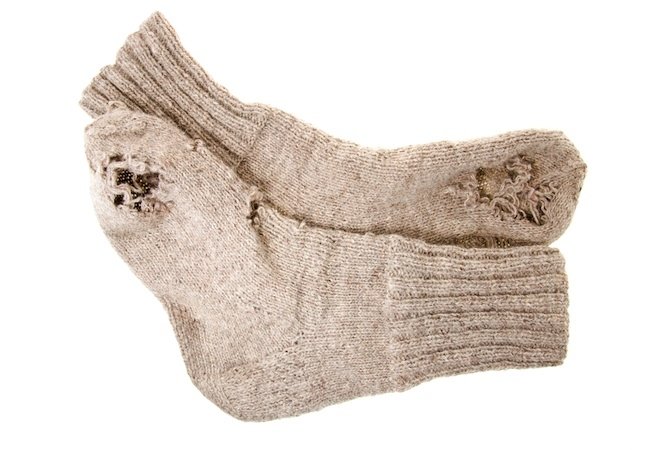We may earn revenue from the products available on this page and participate in affiliate programs. Learn More ›
Tineola bisselliella, the common clothes moth, wreaks havoc on wardrobes, destroying shirts and socks, pants and sweaters, without your even noticing there’s a pest problem. Once clothes moths find their way to your natural fabrics, the insects lay eggs and the situation worsens, with hatched larvae hungrily feeding themselves on wood, silk, fur and cotton. The best way to get rid of moths is to never allow an infestation in the first place. Prevention is key; eradication can be a real chore. We’ll cover both. Whether you’ve discovered clothes moths in your home—yikes!—or are hoping never to see one, follow the advice outlined below.
Moth Prevention
Take the following precautions to ensure that your store clothing remains free of moths:
- Since food stains attract moths, be sure to launder all clothing before putting it away, particularly if you’re storing garments for the off-season.
- If you plan to leave clothes untouched for a few months, store them in airtight bins or vacuum bags.
- Install lighting in the closet and keep an efficient LED bulb going at all times. Clothes moths prefer dark environments and are likely to shy away.
- Once per season, clean the interior of the closet with an all-purpose cleaner, paying special attention to corners, shelves, and baseboards.
- Vacuum a carpeted closet as often as once per week. Allow dirt and dust to accumulate, and you’re extending an open invitation to clothes moths.
- A lot of people hate the smell of mothballs. If you’re one of those people, consider natural repellents, including red cedar chips and ground black pepper.

Moth Removal
Damage to your clothing provides unmistakable evidence of a moth infestation. But if you’re not sure whether or not there’s an issue, keep an eye out: Clothes moths are typically light gold or buff-colored, with a half-inch wingspan (their larvae, meanwhile, look like small white worms). If despite your best efforts, you discover moths have invaded your closet, don’t despair. You can solve the problem in relatively short order with some elbow grease:
- Vigorously brush (or even vacuum) your clothes, then launder (or dry-clean) all damaged garments—that is, the ones that are salvageable. For best results, wash all affected clothes in hot water—at least 120 degrees—for at least 20 minutes. (You can also try freezing garments for several days). If you encounter any items that’ve been damaged beyond repair, seal them in plastic garbage bags, then remove the bags from your home as soon as possible.
- Vacuum the floors, shelves, and walls of your closet, paying special attention to the nooks and crannies that may be concealing larvae. Next, spray the closet with insecticide specially formulated for moths (view example on Amazon). Suitable products are those containing pyrethrum, chlorpyrifos, allethrin or permethrin as the active ingredient.
- Prevent future infestations by storing clothing in airtight containers or vacuum bags. For extra protection, use a moth repellant, whether mothballs or a natural substitute. You also may want to try moth traps; these are adhesive-lined cardboard enclosures baited with artificial pheromones. The virtue of traps is that that they can help you monitor moth activity, giving you a sense of the problem’s severity. In some cases, it may be wise to call in a pest control specialist.


